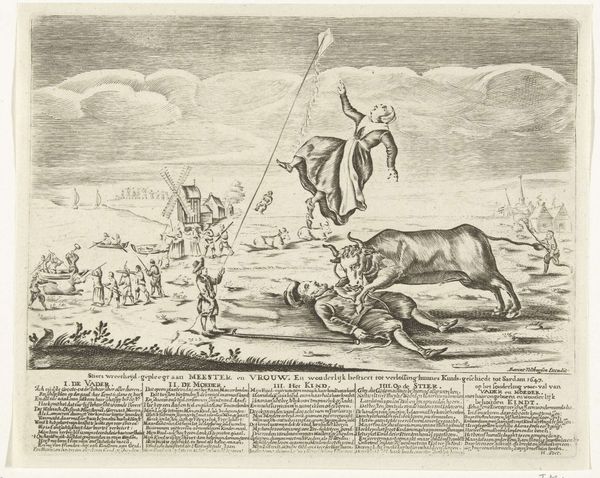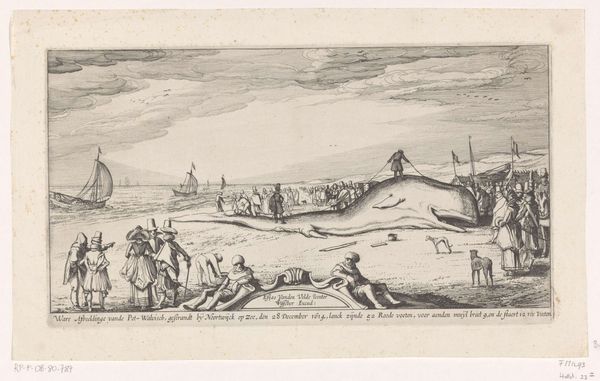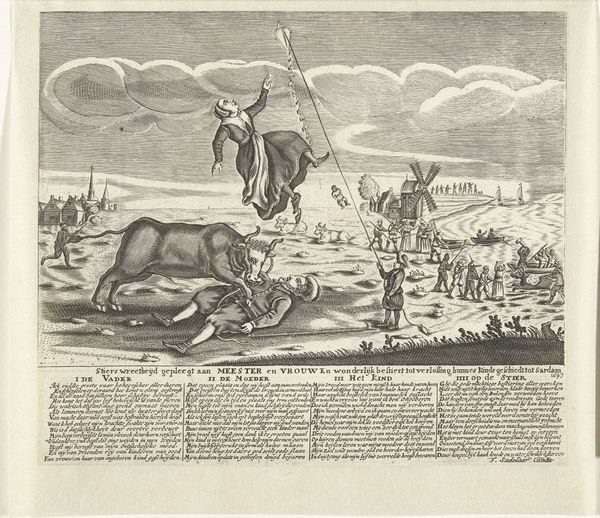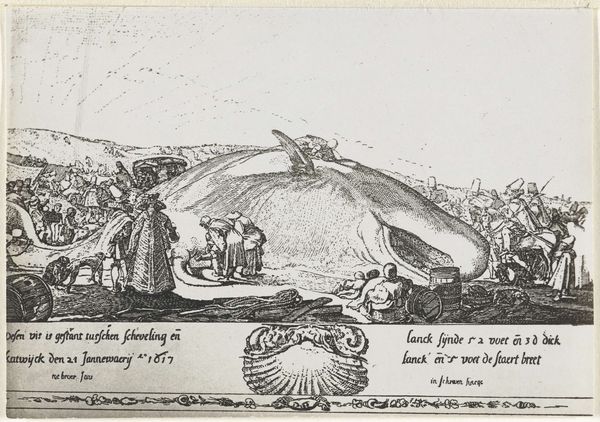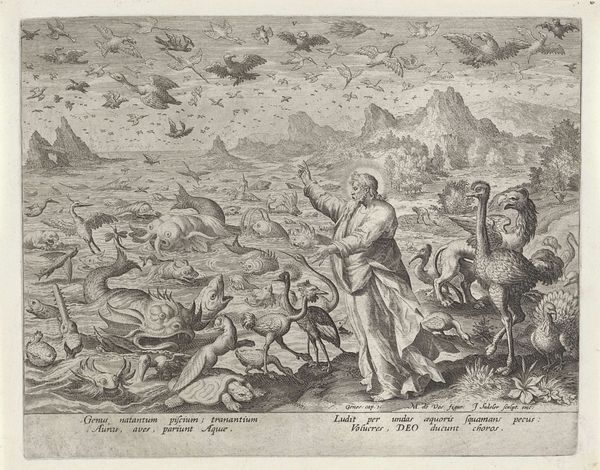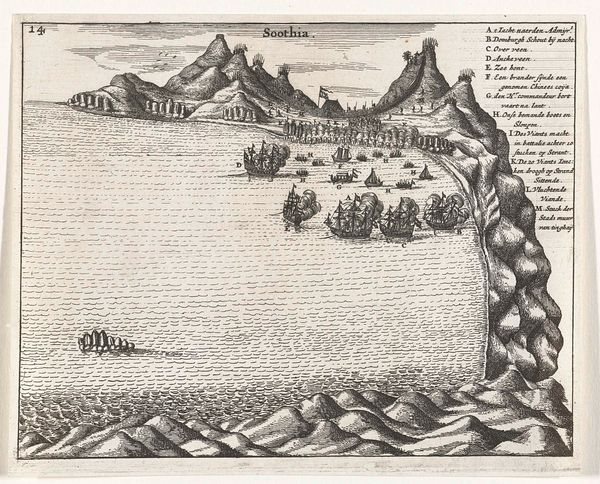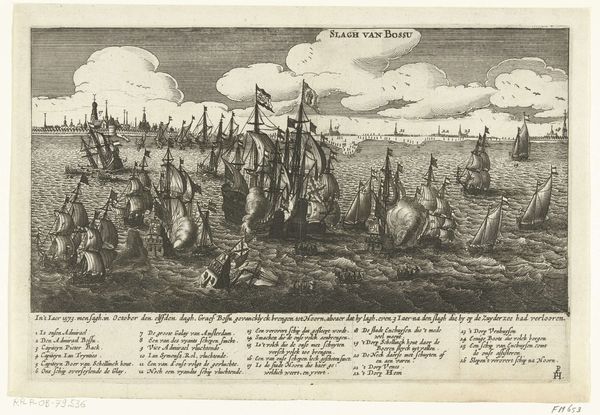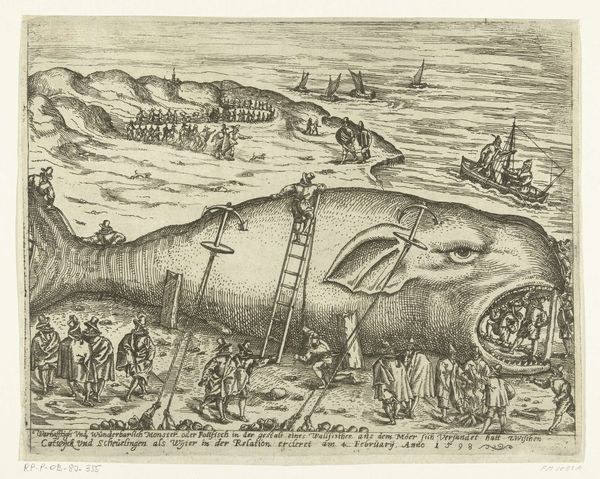
Gestrande potvis op het strand te Noordwijk, 1614 Possibly 1614 - 1645
0:00
0:00
esaiasvandevelde
Rijksmuseum
drawing, print, etching
#
drawing
#
narrative-art
#
dutch-golden-age
# print
#
etching
#
landscape
#
figuration
#
genre-painting
Dimensions: height 149 mm, width 241 mm
Copyright: Rijks Museum: Open Domain
Editor: This is "Stranded Whale on the Beach at Noordwijk, 1614," attributed to Esaias van de Velde. It’s an etching, part of the Rijksmuseum’s collection. What strikes me is how a beached whale transforms into a spectacle. It feels…almost carnivalesque. What do you make of it? Curator: It’s peculiar, isn’t it? The poor creature stranded, almost absurd amidst the milling crowd. But that’s Van de Velde, capturing the everyday wonder, or perhaps the casual exploitation, of nature. Look at how the crowd is dressed, and compare them with the laborers. Where do your eyes focus? Editor: Definitely the whale, it dominates everything. Then, the eye moves to the people climbing on top. Is that a surveyor measuring it? Curator: Perhaps! The drawing documents not just the event, but a cultural moment. The whale becomes a temporary landscape, a stage for human curiosity, and, of course, commerce. The blubber was valuable. But consider this – is it simply a record, or is Van de Velde suggesting something about humanity's relationship with the natural world? Editor: A commentary, maybe? On our tendency to…consume and measure everything? I see a certain callousness now that I didn't before. Curator: Precisely! And that tension – the factual versus the implied – is what makes this little etching so enduring. It’s a moment frozen in time, inviting us to reflect on our own place within the grand scheme of things. Editor: I appreciate your calling out the "casual exploitation", that gave me a fresh perspective on this strange scene. Curator: Exactly. Keep looking. Keep questioning. The more you ponder, the more the picture speaks.
Comments
No comments
Be the first to comment and join the conversation on the ultimate creative platform.


